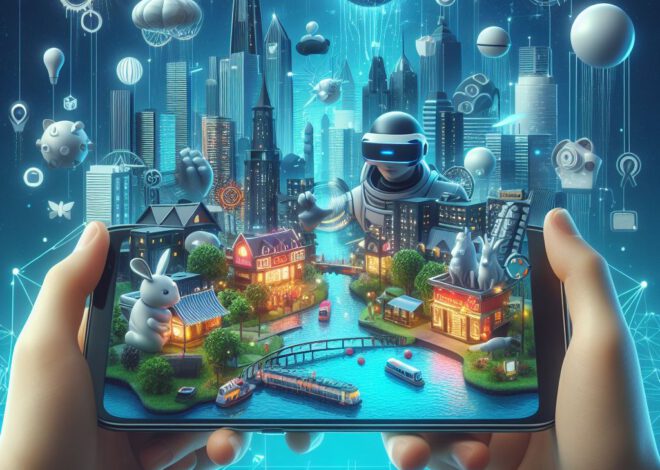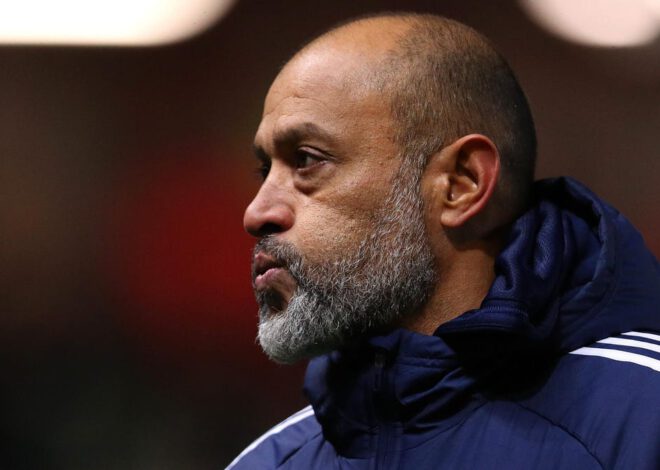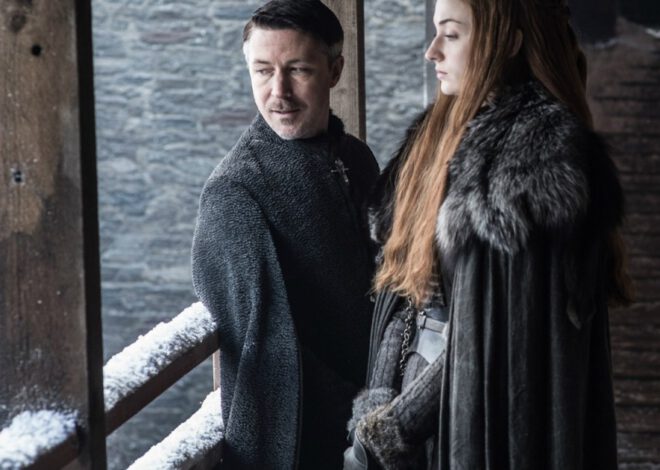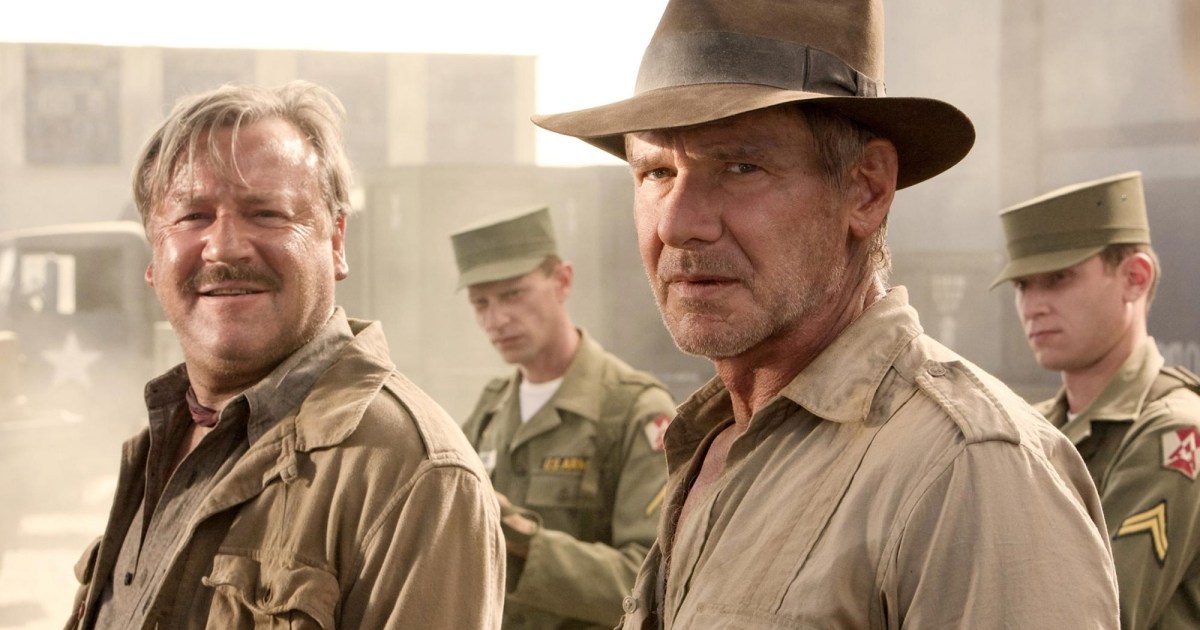
Is Indiana Jones and the Kingdom of the Crystal Skull really that bad?
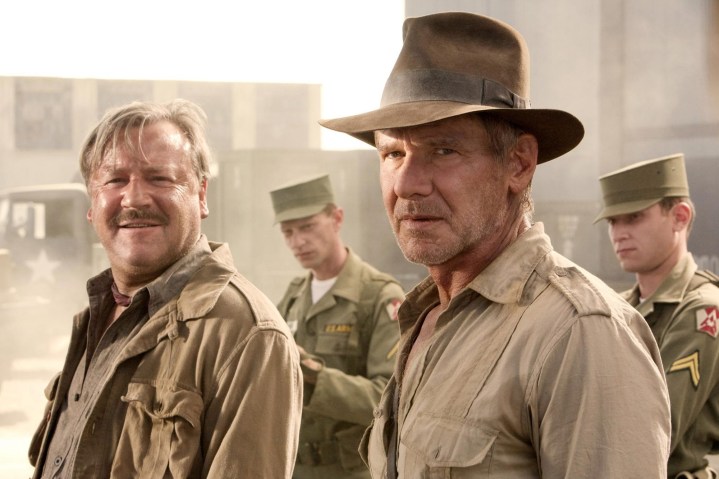 Paramount Pictures
Paramount Pictures
From the moment it begins, something about Indiana Jones and the Kingdom of the Crystal Skull just feels off. The film was released nearly 20 years after Indiana Jones and the Last Crusade, which brought Steven Spielberg and George Lucas’ original Indiana Jones trilogy to an extremely traditional, but nonetheless celebratory, end. Despite that fact, Spielberg, Lucas, and franchise star Harrison Ford decided to bring the franchise back in 2007.
It was a poor decision, and not because Spielberg or Lucas had become worse filmmakers in the 20 years since Last Crusade. Not even Ford’s older age was much of a hindrance in Indiana Jones and the Kingdom of the Crystal Skull. On the contrary, the actor is quite good in the film, and he repeatedly proves throughout it that not many other performers have ever been able to strike a pose as well as him.
However, in the 18 years between Crystal Skull and Last Crusade, the franchise’s key creative team seemed to forget what made it so good in the first place. As a result, when Indiana Jones finally stepped on-screen again, the old-school filmmaking spirit that had once made his original adventures so exciting had vanished, replaced by contemporary shortcuts that left Kingdom of the Crystal Skull feeling like the zero-calorie version of a meal audiences had once savored.
The Kingdom of the Crystal Skull’s main sin
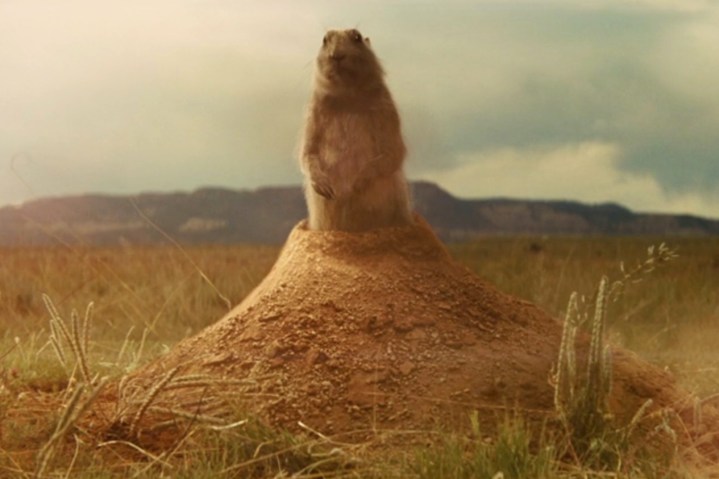 Paramount Pictures
Paramount Pictures
Indiana Jones and the Kingdom of the Crystal Skull opens with a shot of a CGI prairie dog popping up out of a mound of dirt. To say that this one image foreshadows many of the problems that are still to come in the film would be an understatement. Not only does the shot itself look surprisingly fake, but it also signals to viewers that the Indiana Jones franchise’s once-famous reliance on practical effects is a thing of the past. The rest of Kingdom of the Crystal Skull, unfortunately, follows through on that promise.
From a truly unnecessary and much-derided sequence involving CGI monkeys swinging through a jungle to a third-act climax that slowly but surely devolves into a swirling storm of bad digital effects, the Indiana Jones franchise’s fourth installment is full of moments that look laughably bad. While that’d be a disappointing thing to say about any film, it’s a particularly frustrating criticism to be able to make of an Indiana Jones movie.
The franchise has, after all, never been all that thematically compelling. Instead, the series’ first three installments — 1981’s Raiders of the Lost Ark most of all — stand out mostly for just how exuberantly they were made. The three blockbusters feel like pure-hearted exercises in big-budget action filmmaking on the part of Spielberg, a director who has always been more at home in the action-adventure genre than most.
If ain’t broke, don’t CGI it
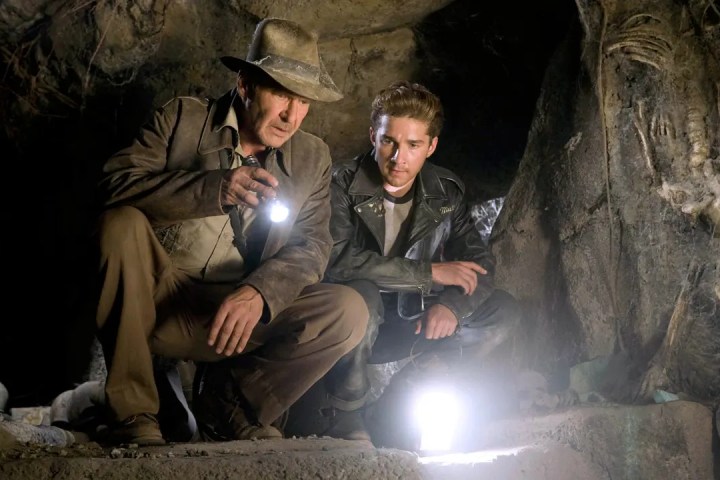 Paramount Pictures / Paramount Pictures
Paramount Pictures / Paramount Pictures
Raiders of the Lost Ark, Temple of Doom, and The Last Crusade are bound together not only by their similar tones and recurring stars, but also by their practical effects, locations, and set pieces. From the face-melting scene at the end of Raiders to the nightclub sequence in Temple of Doom, the first three Indiana Jones movies feel simultaneously fake and real, and that’s part of their charm. Viewers may, for instance, know that they’re not seeing a real boulder roll toward Harrison Ford during the iconic opening scene of Raiders, but they also know that something is rolling toward him.
There’s a tactile quality to the filmmaking on display in the franchise’s first three installments. They look and feel like the products of a filmmaker who was given the chance to utilize every moviemaking trick at his disposal. The result is a trio of action movies that are hokey and cheesy, but also effective on a truly visceral level. Therefore, when Spielberg and Lucas chose to abandon that tactile quality by using CGI to bring large portions of Kingdom of the Crystal Skull’s sci-fi story to life, what they were left with was a film that was just hokey and cheesy.
Will Dial of Destiny repeat the franchise’s past mistakes?
Indiana Jones and the Dial of Destiny | Official Trailer
Now, 15 years after Kingdom of the Crystal Skull first tarnished its reputation, the Indiana Jones franchise is coming back to the big screen. The series’ latest entry, Indiana Jones and the Dial of Destiny, is the first not to be directed by Spielberg, who relinquished the director’s chair this time around to Ford v Ferrari filmmaker James Mangold. While viewers will have to wait until the film’s June 30 release to find out how well Mangold dealt with the pressure of stepping into Spielberg’s shoes, too, the first trailers for Dial of Destiny don’t suggest that the film learned from its predecessor’s greatest mistake.
Instead, Dial of Destiny looks to be even more CGI-reliant than Kingdom of the Crystal Skull. Consequently, although the new film’s overall quality has yet to be determined, it’s undeniably disappointing to see a series that was once defined by its practical filmmaking tricks ultimately adopt the same shortcuts as many of Hollywood’s other, less well-regarded franchises.
Indiana Jones and the Kingdom of the Crystal Skull is available to stream now on Paramount+ and Disney+.
